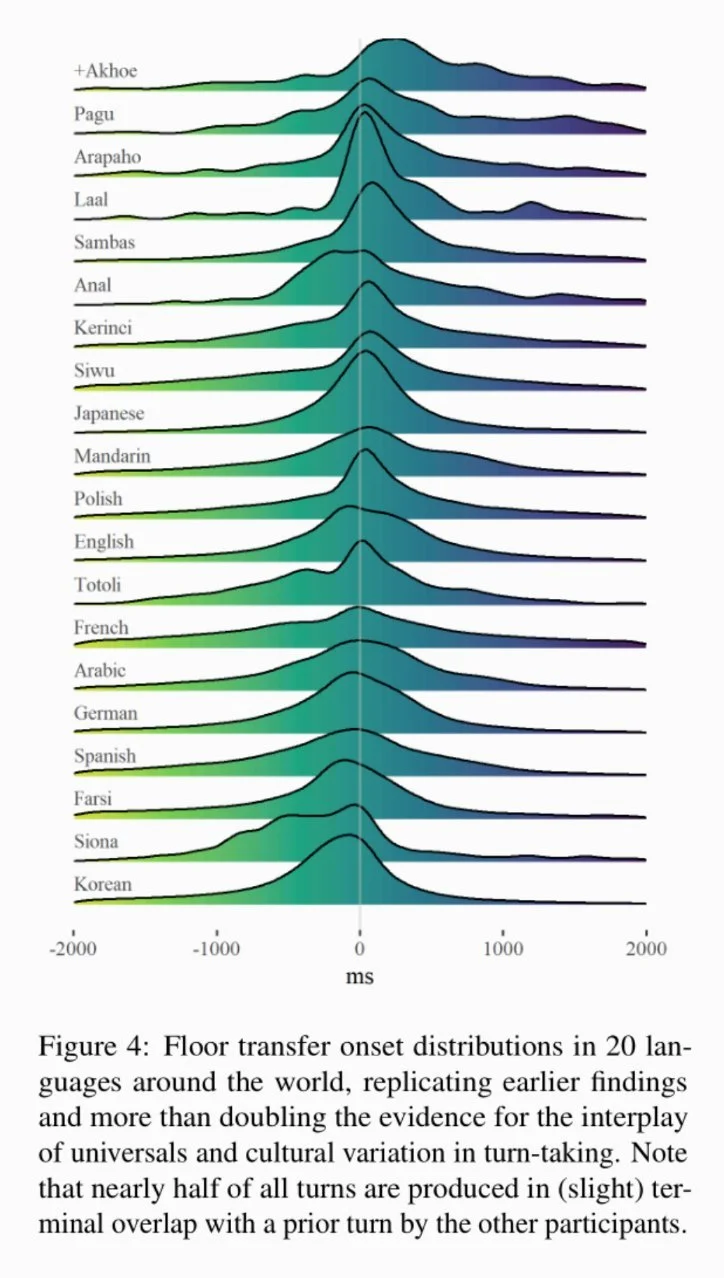Seminar 1 Turn taking
In the orientation, we explored the facts:
conversation achieves social actions;
conversation is highly structured and rule governed (to work efficiently);
professional communication is based on the rules and use of everyday conversation.
In this first topic we will explore the rules of turn-taking in conversation and learn that:
One speaker at a time, one turn after another, with speaker changer recurring;
Speakers are highly adept at and highly attuned to these rules;
We use verbal, syntactic, paralinguistic and embodied cues to manage turn-taking;
Transcription allows us to pay close attention to the features of interaction that create intersubjectivity; and to share observations with others.
1. The rules of interaction
ACTIVITY.
So what are the rules of turn-taking in conversation?
In small groups, add to our working document of the rules of turn-taking in conversation. What could apply and allow for all the variables and contexts of everyday conversation?
What resources do speakers use to manage change of speaker in conversation?
Overlap or interruptions?
Sidnell, J. (2010) Talk. In Conversation Analysis: An Introduction. Malden, MA: Wiley-Blackwell. (p.52):
Overlapping talk, though common, tends to occur in a highly restricted set of places in conversation
Most overlap appears to be a product, rather than a violation, of the system of turn-taking
Conversationalists typically treat overlap as a potential source of impairment and seek to resolve and repair it.
Thus, overlapping talk is typically not, in fact, the product of conversationalists “not listening to each other”. On the contrary, overlapping talk provides some of the most remarkable displays of fine grained orderliness in conversation.
Sacks, H., Schegloff, E., & Jefferson, G. (1974). A simplest systematics for the organization of turn-taking for conversation. Language, 50, 696-735.
Enfield, N. (2017) How we talk: The inner workings of conversation (p.39). New York: Basic Books.
Figure posted by Mark Dingmanse @DingemanseMark
Audacity for advanced students….. (a brief show and share)
Transcription
Some important questions….
Why would we make a record of talk?
‘We can then come to see that a base for using close looking at the world for theorizing about it is that from close looking at the world we can find things that we could not, by imagination, assert were there.’ (Sacks, 1984, p.25)
Angus Wedgey
2. If we have the video of the original sequence of interaction, why do we need a transcript of what was said?
‘It was not from any large interest in language or from some theoretical formulation of what should be studied that I started with tape-recorded conversations, but simply because I could get my hands on it and I could study it again and again, and also, consequentially, because others could look at what I had studied and make of it what they could, if, for example, they wanted to be able to disagree with me’. (Sacks, 1984, p.26).
3. What would we need to transcribe? Why?
….
“‘It is possible that the detailed study of small phenomena may give an enormous understanding of the way humans do things and the kinds of objects they use to construct and order their affairs.’ ”






